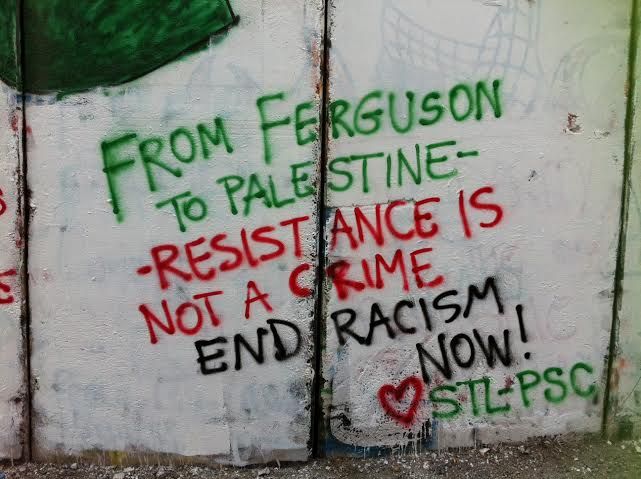
Arundhati Roy: “Confront Empire and Lay Siege to It”


 The Missouri History Museum in St. Louis canceled a community event scheduled for Thursday after organizers refused to remove Palestinian panelists from the platform.
The Missouri History Museum in St. Louis canceled a community event scheduled for Thursday after organizers refused to remove Palestinian panelists from the platform.
The panel, titled “From Ferguson to Ayotzinapa to Palestine: Solidarity and Collaborative Action,” was organized by the Washington University student group AltaVoz to draw parallels between the struggles against state violence in the US, Mexico and Palestine.

Missouri History Museum’s webpage, before they cancelled the event
AltaVoz was formed in response to the police kidnapping of 43 leftist student activists from the Ayotzinapa teacher’s college in Mexico. The students, who went missing in the city of Iguala while on their way to protest the state’s corrupt education policies, are believed to have been murdered.
Among the panelists were activists from an assortment of social justice organizations in St. Louis, including the Organization for the Black Struggle, Latinos en Axion STL, the Interfaith Committee on Latin America and the St. Louis Palestine Solidarity Committee.
A hazard facing mass movements is the NGO-ization of resistance. It will be easy to twist what I’m about to say into an indictment of all NGOs. That would be a falsehood. In the murky waters of fake NGOs set up or to siphon off grant money or as tax dodges (in states like Bihar, they are given as dowry), of course, there are NGOs doing valuable work. But it’s important to consider the NGO phenomenon in a broader political context.
In India, for instance, the funded NGO boom began in the late 1980s and 1990s. It coincided with the opening of India’s markets to neoliberalism. At the time, the Indian state, in keeping with the requirements of structural adjustment, was withdrawing funding from rural development, agriculture, energy, transport and public health. As the state abdicated its traditional role, NGOs moved in to work in these very areas. The difference, of course, is that the funds available to them are a minuscule fraction of the actual cut in public spending.
Most large-funded NGOs are financed and patronized by aid and development agencies, which are, in turn, funded by Western governments, the World Bank, the UN and some multinational corporations. Though they may not be the very same agencies, they are certainly part of the same loose, political formation that oversees the neoliberal project and demands the slash in government spending in the first place.
In the early morning of Wednesday, October 9, riot police and members of the Group of Special Operations (GOPE in Spanish), an elite, special unit of the Chilean Police, raided the Temucuicui Autonomous Community [es], an indigenous Mapuche community located near the town of Ercilla in the Araucania Region of Southern Chile.A self-denominated “autonomous” community, Temucuicui has occupied what they consider to be ancestral lands for over two years. They have resisted several eviction attempts, and their resistance has landed many community leaders and members in jail.
The land where the community lives is part of what the Mapuche call “Wallmapu”, meaning Mapuche country, where clashes between police forces and Mapuche activists are common. Currently, these lands are contested, but legally owned by landowners Rene Urban, Martin Ruf and the Zeit family. Continue reading
“It is said that no one truly knows a nation until one has been inside its jails. A nation should not be judged by how it treats its highest citizens, but its lowest ones.” ― Nelson Mandela
Video of the Joint Informational Hearing on Segregation Policies in California Prisons in the California Legislature on October 9, 2013.